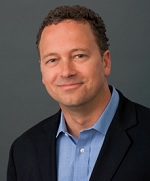 |
| DiCE CEO Kevin Judice |
The last time I crossed paths with Kevin Judice, he was helping Jeff Stein launch San Diego-based Cidara Therapeutics, an antibiotics developer that lay well outside the perimeters of Judice's home base in the Bay Area. Now Judice, a Genentech veteran and longtime biotech entrepreneur on the West Coast, is gearing up DiCE Molecules, a spinout from a much closer campus at Stanford that's jumping into the spotlight today with the help of a collaboration with Sanofi's ($SNY) Sunrise team that starts with $50 million in early-stage cash and support, with the potential to add billions more for a successful lineup of programs.
DiCE is the brainchild of Pehr Harbury, a Stanford professor and biochemist--and MacArthur "genius" award winner--who's been constructing the building blocks of a platform technology, which is exactly Sanofi's sweet spot for cutting-edge deals. The pharma company's top execs have acknowledged that they are not an innovation powerhouse; development is their domain. So one of their biotech strategies--separate from the big plays like Regeneron ($REGN) and Alnylam ($ALNY)--is to go in early, tying up with potentially disruptive startups like Warp Drive Bio, MyoKardia or now DiCE, in search of new drugs that can fit into core therapeutic areas like diabetes, rare diseases, cardiovascular or oncology.
Sanofi is essentially putting up the money for DiCE to make its public debut. And the pharma giant has carved out 12 targets for which it will add up to $184 million in development milestones for each successful effort. The grand total on the table: $2.2 billion.
Throughout his whole career as a chemist, says Judice, he's suffered from technology envy when it comes to the biologists he works with. In biology, your work is focused on directed evolution. Now he's planning to create a little tech envy of his own. DiCE is all about directed chemical evolution, where it gets its name.
One of DiCE's objectives is to prove that it has the technology to interrupt protein-protein interfaces with a small molecule, potentially replacing a wave of antibody blockbusters on the market. In a case like cancer, there may not be a big advantage in coming up with an oral alternative for, say, Avastin, says Judice, but for chronic diseases like inflammation and cardiovascular disease, a pill could be far preferable to the pricey antibodies that command markets.
There's also a small galaxy of targets inside the cell, past the cell membranes that bar antibodies. And Judice says that internal cell sphere will present a new challenge, once they're done providing proof-of-concept data to show that they have what it takes to knock some antibodies off the list of chart-toppers.
This is not your classic venture-backed biotech.
In this case, says Judice, Sanofi is funding the company right after the seed stage, which was provided by angel investors. Early on, DiCE had 10 targets in mind with 5 staffers, says the CEO. Today there are 12 staffers and the company will likely top out at 24 employees. Ideally, there will be another big-payout partnering deal in about a year, says Judice, and that will keep the company funded until it can start handing out dividends.
Don't look for DiCE, set up as an LLC, to go public. The company can generate plenty of returns through collaborations while working on its own in-house pipeline, says the CEO. And if one of their own drugs gets to late-stage development, they can work out a licensing deal with a developer.
For Judice, that kind of company structure works well for a biotech that, as he describes it, has been under construction while in flight. You keep the company staffing tight, stay focused and forge ahead on selected targets. It's not particularly sexy right now, but Judice isn't selling shares to the investment world, either.
"It's fashionable to engage in chest thumping in the biotech world," says Judice. "That's not my style."
It is a style that seems to suit Sanofi well, though. A number of pharma giants have innovation centers, says Judice, and "Sanofi's version (Sunrise) is a well-oiled machine." Another plus: The pharma company is also intent on sticking with the collaboration, not engulfing them in the process.
"We really believe we're better together," says Kathy Bowdish, who heads the small team of four at Sanofi's Sunrise initiative. Sunrise likes to get in the act about three to 5 years ahead of an IND, she adds. And that made for a nice fit with DiCE.